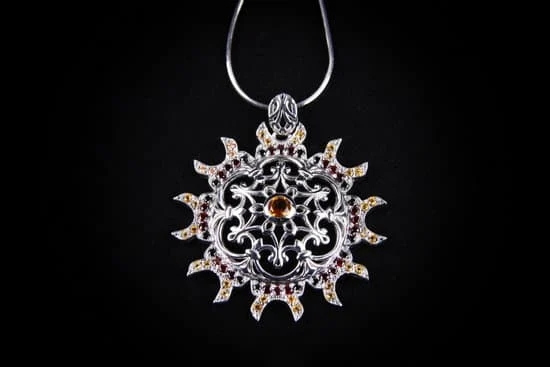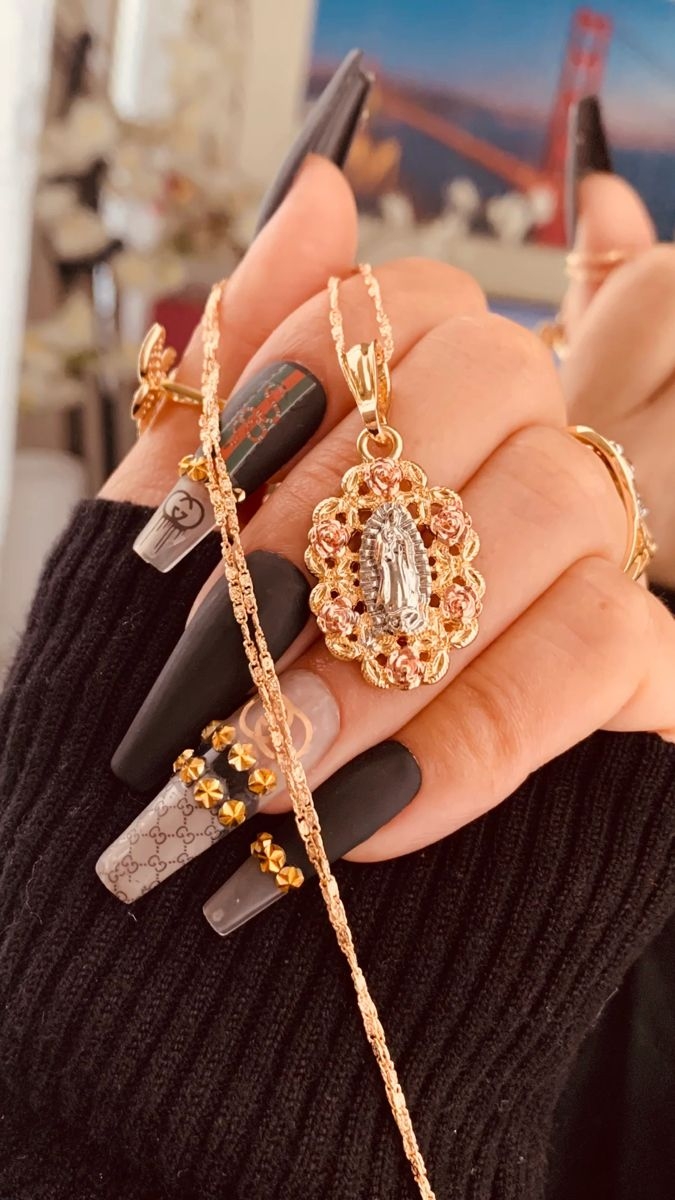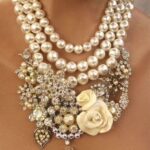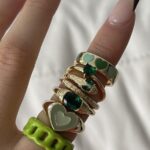What percentage should you get when selling fine jewelry? Understanding the value of fine jewelry is essential in determining a fair selling price. Factors such as authenticity, quality, condition, market demand, and trends all play a role in evaluating the value of fine jewelry. In this article, we will discuss the various factors that affect the selling price of fine jewelry and provide tips on negotiating a fair percentage when selling.
When it comes to selling fine jewelry, it’s crucial to have a clear understanding of the factors that can affect its value. The authenticity and certification of the jewelry piece are key considerations, as they can significantly impact its selling price. Additionally, the overall quality and condition of the jewelry will also play a role in determining its value in the market.
Market demand and trends are other important factors to consider when deciding on a selling price for fine jewelry. Understanding what styles and designs are currently popular can help you evaluate whether there is a high demand for your jewelry piece, which can ultimately influence the percentage you should aim to get when selling.
In the following sections, we will delve deeper into how to determine the quality and condition of fine jewelry, evaluating market demand and trends, negotiating a fair percentage for selling, calculating potential profits and margins, as well as providing tips for successfully protecting your investment when selling fine jewelry.
Factors That Affect the Selling Price of Fine Jewelry
When selling fine jewelry, it is crucial to understand the various factors that can affect its selling price. One of the most important determinants is the quality and condition of the jewelry piece. High-quality materials such as 24-karat gold or platinum, along with high-grade gemstones like diamonds, rubies, and sapphires, will command a higher price in the market. Additionally, the craftsmanship and design intricacy also play a significant role in determining the value of fine jewelry.
Another factor that affects the selling price of fine jewelry is market demand and trends. Just like any other luxury good, the demand for certain types of jewelry can fluctuate based on current trends and fashion preferences. For instance, vintage and antique pieces may be more sought after during certain periods, while modern contemporary designs might be in higher demand at other times.
Authenticity and certification are also crucial when pricing fine jewelry. Buyers are often willing to pay a premium for pieces that come with proper authentication and certification from reputable organizations or gemological laboratories. This not only provides assurance regarding the authenticity of the materials used but also adds to the overall value of the jewelry piece.
| Factor | Effect on Selling Price |
|---|---|
| Quality and Condition | Determines if it commands a higher price |
| Market Demand and Trends | Affects demand based on current trends |
| Authenticity and Certification | Can command a premium if properly authenticated |
The Role of Authenticity and Certification
When selling fine jewelry, one of the most critical factors that can significantly affect the selling price is authenticity and certification. Authenticity refers to the genuine origin of the jewelry, ensuring that it is not a replica or counterfeit. Certification, on the other hand, verifies the quality and characteristics of the jewelry, such as diamonds’ cut, color, clarity, and carat weight. These factors play a crucial role in determining the value of fine jewelry in the market.
Without proper authenticity and certification, it can be challenging to establish trust with potential buyers. In today’s market, consumers are becoming increasingly cautious about purchasing fine jewelry without proper validation. Therefore, obtaining documentation from reputable sources such as gemological laboratories or professional appraisers is essential when selling fine jewelry. This documentation provides assurance to buyers regarding the quality and authenticity of the jewelry they are considering purchasing.
It’s important to note that when selling fine jewelry, potential buyers may ask for proof of authenticity and certification before making a purchase. Therefore, sellers should be proactive in obtaining and presenting this documentation to effectively communicate the value of their jewelry. By doing so, sellers can increase their chances of securing a fair percentage for their fine jewelry and building credibility with potential buyers.
Determining the Quality and Condition of Fine Jewelry
When it comes to selling fine jewelry, determining the quality and condition of the pieces you have is crucial. Potential buyers will be looking for jewelry that is not only aesthetically pleasing but also in good condition. One important factor to consider is the metal content and purity. This includes understanding the differences between 24K, 18K, and 14K gold, as well as the various grades of silver and platinum.
In addition to the metal content, evaluating the gemstones in the jewelry is essential. You should be able to identify and assess the cut, clarity, color, and carat weight of any diamonds or colored gemstones. This information will not only help you determine the quality of the jewelry but also allow you to accurately price it when selling.
Another aspect to consider when determining the quality and condition of fine jewelry is its craftsmanship. Examine the setting and mounting for any signs of damage or wear, such as loose stones or bent prongs. Additionally, check for any marks or stamps on the piece that indicate its designer or maker. All these factors will play a role in determining an accurate value for your fine jewelry.
When it comes to pricing fine jewelry for sale, understanding its quality and condition is essential in negotiating a fair percentage for your pieces. Without this knowledge, you may end up underselling your items or pricing them too high, which can deter potential buyers. Therefore, taking the time to thoroughly assess and understand the quality and condition of your fine jewelry will ultimately lead to a more successful selling process.
What percentage should you get when selling fine jewelry? The value of your jewelry should play a significant role in determining a fair percentage for selling it. By understanding these factors related to determining quality and condition, you can confidently negotiate a percentage that reflects the true worth of your fine jewelry pieces.
Evaluating Market Demand and Trends
When it comes to selling fine jewelry, it is crucial to evaluate the current market demand and trends in order to determine the right pricing and potential profits. One of the key factors to consider is the ever-changing tastes and preferences of consumers, as well as any emerging fashion trends that may influence the demand for certain types of jewelry.
Additionally, keeping an eye on popular styles and designs can help sellers align their offerings with what buyers are actively seeking.
Another important aspect of evaluating market demand and trends is understanding the impact of seasonal fluctuations. For example, certain pieces of fine jewelry may be more sought after during specific times of the year, such as engagement rings during holiday seasons or colorful gemstone jewelry during spring and summer months. By being aware of these patterns, sellers can strategically time their listings to maximize the potential for sales.
Furthermore, staying informed about industry insights and projections can provide valuable guidance when it comes to pricing fine jewelry. Analyzing reports on consumer behavior and spending habits can offer sellers a clearer perspective on what items are currently in high demand and what price points are most attractive to buyers. Ultimately, staying attuned to market demand and trends is essential in determining the best percentage to aim for when selling fine jewelry.
Negotiating a Fair Percentage for Selling Fine Jewelry
When it comes to selling fine jewelry, one of the most important considerations is negotiating a fair percentage for the sale. This is crucial for both the seller and the buyer to ensure that the transaction is beneficial for both parties. In this section, we will explore some key factors to consider when negotiating a fair percentage for selling fine jewelry.
Market Value and Appraisal
Before entering into negotiations, it is essential to have a clear understanding of the market value of the fine jewelry in question. This can be determined through professional appraisal services, which provide an independent assessment of the quality and value of the jewelry. Understanding the current market value will give sellers a solid foundation for negotiating a fair percentage.
Rarity and Desirability
Another factor that should be taken into account when negotiating a fair percentage for selling fine jewelry is the rarity and desirability of the piece. Jewelry that is unique or highly sought-after may command a higher percentage, as there may be greater demand for such items. Factors such as the age, design, and historical significance of the jewelry can also influence its desirability and ultimately impact the negotiation process.
Transparency and Trust
In any negotiation for selling fine jewelry, transparency and trust are crucial elements. Both parties should be honest about their expectations and concerns when it comes to determining a fair percentage. It’s important to establish open communication and build trust throughout the negotiation process to ensure that both parties are satisfied with the final agreement. By maintaining transparency, sellers can also demonstrate their commitment to providing buyers with a fair deal and an authentic piece of fine jewelry.
By considering these key factors – market value, rarity and desirability, transparency and trust – sellers can navigate negotiations with confidence in order to obtain a fair percentage when selling their fine jewelry.
Calculating Potential Profits and Margins
When it comes to selling fine jewelry, one of the most important factors to consider is how to calculate potential profits and margins. This is crucial for ensuring that you are getting a fair percentage for your jewelry and maximizing your return on investment. Here are some key points to consider when calculating potential profits and margins:
- Cost of the jewelry: The first step in calculating potential profits and margins is to determine the cost of the jewelry. This includes the purchase price of the jewelry, any additional costs such as shipping or insurance, and any expenses related to preparing the jewelry for sale.
- Selling price: Once you know the cost of the jewelry, you can then determine a suitable selling price. Consider market demand, current trends, and pricing strategies used by competitors.
- Percentage markup: To calculate your potential profit margin, it’s important to decide on a reasonable percentage markup. This will depend on factors such as the quality and uniqueness of the jewelry, as well as your target profit margin.
Ultimately, understanding how to calculate potential profits and margins when selling fine jewelry is essential for making informed decisions about pricing and negotiating fair percentages with buyers. By carefully considering the cost of the jewelry, determining a suitable selling price, and setting a reasonable percentage markup, you can ensure that you are getting a fair return on your investment.
Additionally, it’s important to stay updated with market trends and demand to ensure that you’re able to adjust your pricing strategy accordingly. By keeping an eye on how similar pieces are being priced in the market at any given time can help you ensure that you remain competitive while also maximizing your potential profits from selling fine jewelry.
Protecting Your Investment
When it comes to selling fine jewelry, it is important to take steps to protect your investment and ensure a successful transaction. Whether you are selling through a jeweler, online platform, or directly to a buyer, there are several tips that can help maximize your profits and minimize potential risks. From understanding the value and authenticity of your jewelry to negotiating a fair percentage, here are some key strategies for successfully selling fine jewelry.
Understanding the Value and Authenticity
Before selling your fine jewelry, it is crucial to have a clear understanding of its value. This includes knowing the quality of the materials used, such as the purity of precious metals and the clarity and color of gemstones.
Additionally, having proper certification and authentication documents can significantly increase the value of your jewelry. Potential buyers will often want reassurance that they are purchasing authentic and high-quality pieces, so having these documents readily available can help speed up the sales process and fetch a higher percentage as well.
Researching Market Demand and Trends
Another important aspect of protecting your investment when selling fine jewelry is staying informed about current market demand and trends. By keeping an eye on popular styles, designer brands, and sought-after gemstones, you can position your jewelry in a way that appeals to potential buyers. Understanding what is currently in demand allows you to set an appropriate price point for your items and increases the likelihood of receiving a fair percentage when making a sale.
Negotiating Fair Percentage
When it comes to determining what percentage you should get when selling fine jewelry, it ultimately depends on various factors such as the quality, rarity, market demand, and condition of the piece. It’s essential to research comparable items on the market to gauge what percentage would be suitable for your specific piece of jewelry.
It’s also important to be prepared to negotiate with potential buyers or consignment partners in order to secure a fair deal that reflects the true value of your items.
Understanding the Sales Process for Fine Jewelry
In conclusion, selling fine jewelry can be a profitable venture when approached with the right knowledge and understanding of the sales process. It is important to consider all factors that affect the selling price, such as the value, quality, condition, authenticity, and market demand for the jewelry piece. By evaluating these factors carefully, you can negotiate a fair percentage for selling your fine jewelry.
When determining the percentage you should get when selling fine jewelry, it is crucial to take into account the various costs involved, such as appraisal fees, marketing expenses, and potential commissions for sales agents or platforms. This will allow you to calculate potential profits and margins accurately and protect your investment during the sales process.
One of the most essential tips for successfully selling fine jewelry is to ensure authenticity and certification. By obtaining proper documentation and certification for your jewelry pieces, you can build trust with potential buyers and command a higher selling price. Additionally, staying informed about market demand and trends will help you make informed decisions about when and how to sell your jewelry for maximum profit.
Frequently Asked Questions
What Is a Good Commission Rate for Jewelry Sales?
A good commission rate for jewelry sales can vary depending on the specific arrangements between the jeweler and the salesperson. However, in general, commission rates for jewelry sales typically range from 7% to 10% of the total sale. Factors such as level of experience, performance, and type of jewelry can also influence the commission rate.
What Percentage Do Jewelers Pay for Jewelry?
Jewelers typically pay a percentage that ranges from 40% to 60% for jewelry, with some variations based on factors like type of jewelry, location, and exclusivity of the pieces. This percentage covers not only the cost of acquiring the jewelry but also other expenses associated with running a jewelry business, such as overhead costs and marketing.
What Is the Typical Markup on Fine Jewelry?
The typical markup on fine jewelry is usually around 100% to 300%. This means that if a piece of fine jewelry costs $500 to make, it may be sold at retail for anywhere from $1,000 to $1,500.
The high markup accounts for factors such as materials used, craftsmanship, brand reputation, and the overall value perceived by customers when purchasing fine jewelry.

Welcome to my jewelry blog! My name is Sarah and I am the owner of this blog.
I love making jewelry and sharing my creations with others.
So whether you’re someone who loves wearing jewelry yourself or simply enjoys learning about it, be sure to check out my blog for insightful posts on everything related to this exciting topic!





